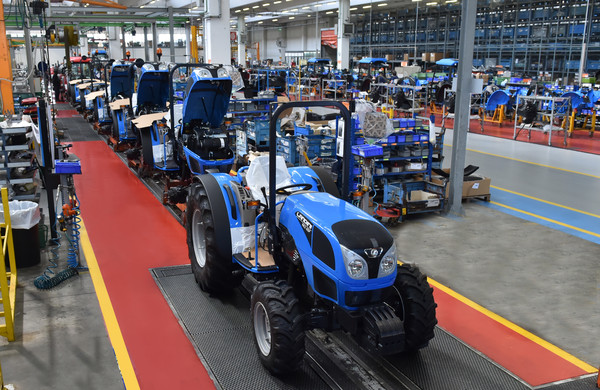
Europe, market recovering over the year
The agricultural machinery market is showing positive signals for expectations of a general revival in during 2017 in the wake of problems experienced in the most recent seasons. Growth is seen in Germany and the UK whereas the French market is still in decline. For Italy the outlook is for significant growth owing to an overall favorable trend
Recovery is in sight for the agricultural machinery market which is expected to display moderate growth to reverse the trend of the past months. Cema, the agricultural machinery association representing thirty European nations, is forecasting a market on the increase on the basis of statistics on European tractor demand in the first three months of the year. A marginal 1.3% decline in these months compared to the same period in 2016 is assigned not to a general trend but to the downturn reported for France, one of the continent’s biggest market which drove the European average down. Analyses of the trends of the single markets disclose lively January through March dynamics with substantial gains for Belgium, up by 4.9%, Denmark, ahead 12.6%, Germany, plus 5.7%, and the UK, surging by 26.4%, as well as a 13.8% increase for Italy and Spain up by 22.3%.
Recovery, but not in all compartments
CEMA underscored the point that the return of agricultural machinery expansion is not necessarily generalized but involves certain types of machinery. For tractors, the expectations are for increased sales of those under 50 HP and the over 150 HP category whereas stagnation is predicted for those in the intermediate categories. The association also took the view that balers, mowers, sprayers and combine harvesters are also slowing down.
Forecast for 2017: Germany progressing, France in trouble
After a difficult 2016, down 5% under 2015, the outlook for the German agricultural machinery market is a start with a slow climb up the slope thanks to strong growth of demand for balers and combine harvesters. Though Germany is seen as recovering, France is not expected to show a reversal of the 2016 trend which came to a stop with an 8% decline; the single exception appears to be coming in the combine harvester sector. The balance sheet for Italy for the year is not positive despite the good performance reported for the opening months of the year; predictions are for a decline of slightly more than 2% in tractor sales. The Netherland and Belgium, on the other hand, should distance themselves from the levels reached in 2016.
Recovery for the Italian market
The Italian market is now showing interesting dynamics in the wake of the well known negative cycle involving a systemic reduction in domestic sales volume over ten years partially compensated for by exports exalted by the excellence of Made in Italy production. However, 2017 is expected to finally bring about a change in direction. Data covering the first five months of the year is, in fact, showing a 7.2% gain in the registration of tractors and a significant 7.1% surge for combine harvesters, a 1.3% increase for transporters and trailers up by 2.3%. The growth for tractor sales have been especially greater in such regions as the Veneto, Piedmont, Lazio, Emilia Romagna and Campania due to a natural recovery of sales following a long series of negative years and, in part, the preparation of application for financing through the European Union Regional Development Funds. The Italian Agricultural Machinery Manufacturers Federation, FederUnacoma, has taken the view that sales could in the middle months of the year with the the profitability crisis of farming enterprises due initially to frosts and the dry spell which has hit crops in many regions around the country. But the forecast for the end of the year is for a pick up by a number of percentage points for new generation machinery thanks to such incentives as INAIL financing.
The consequences of Brexit
The exit of the UK from the European Union will take effect only with the close of negotiations between London and Brussels but has begun leading to first effects in the agricultural mechanization sector. The devaluation of the pound has helped to improve the financial conditions of British farmers but has also penalized the import of agricultural machinery. According to the CEMA forecast, the UK market should show a slight recovery in 2017 but without moving much from the 2016 values which dipped by 2% under 2015. The drive will come mainly in the sectors of tractors, seeddrills and mixer wagons while the other segments remain at the level reached last year.
World scenario, heading to the Agrievolution Summit
The international agricultural mechanization scenario, global and not only European, will be handled in the Agrievolution Alliance Summit, the organization bringing together the agricultural machinery manufacturers in the leading countries meeting next October 25 and 26 in Wuhan, China. Agrievolution Summits are held every three years for mapping out scenarios for the sector in the years to come and analyses of the market for the current year.
At present, data on tractor sales in the major countries around the world are those based on the first quarter of the year.
These figures show strong sales increases in China with 183,000 units sold in the first quarter for a 47% leap over the same period in 2016 and India up by 15% over this period with sales of 108,000 units whereas the United States of reported a 7% downturn with 15,600 new units registered and Turkey was off by 3% with 11,600 tractors moved in the first quarter.








